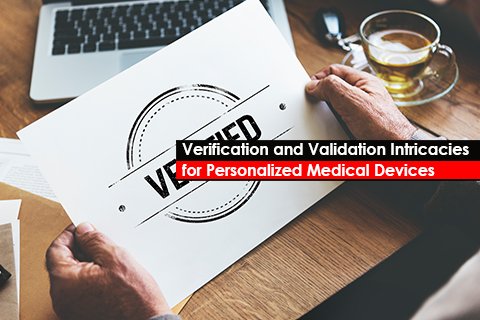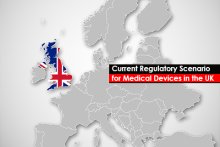In the ever-evolving healthcare landscape, personalized medical devices have emerged as groundbreaking, tailoring treatments to individual patients based on their unique characteristics. This shift toward personalized care has given rise to a new generation of medical devices that are designed to meet specific patient needs. However, with innovation comes responsibility, and the European Union (EU) Medical Device Regulation (MDR) 2017/745 and In Vitro Diagnostics Regulation (IVDR) 2017/746 have set stringent standards to ensure the safety and efficacy of these devices.
Medical device verification entails validating that the design output of a device aligns with the specified design input requirements. This encompasses a sequence of examinations, tests, and assessments aimed at ensuring the accurate and precise manufacturing of the device in accordance with its specifications. Verification activities may encompass design reviews, executing checks for compliance with standards, and conducting physical tests on the device.
Medical device validation is the process of verifying that a device aligns with the requirements of its intended users and functions, as intended in either the real or the simulated usage environment. This encompasses activities like clinical evaluations or performance assessments, wherein clinical data is gathered to illustrate the device’s safety and efficacy. In the case of personalized medical devices, special considerations may be necessary due to the distinctive nature of these products.
Under the EU MDR and IVDR, the verification and validation processes are critical as they demonstrate that each device is fit for its intended purpose. The verification and validation processes involve several steps to ensure that a device meets the required safety and performance standards. These steps are highlighted below:
- Design Verification: Manufacturers must verify that the design of a personalized medical device meets pre-defined specifications. This includes assessing the accuracy of the device’s dimensions, material properties, and compatibility with other devices or products.
- Clinical and Performance Evaluation: Under the EU MDR Article 61 and IVDR Chapter VI, manufacturers are required to collect and evaluate clinical data to support the safety and performance claims of their devices. For personalized medical devices, this may involve reviewing relevant scientific literature, expert opinions, and clinical experience with similar devices.
- Biocompatibility: Personalized medical devices that come into contact with the human body must undergo biocompatibility testing as part of the verification process. This ensures that the materials used do not provoke an adverse biological response.
- Validation Testing: Validation testing involves examining the final product under actual or simulated use conditions. For personalized medical devices, this may include patient-specific simulations or testing the device with anatomical models that represent a patient’s unique features.
- Post-market Surveillance (PMS): According to the MDR Article 84 and IVDR Article 10(8), manufacturers must implement a PMS system to continually assess the safety and performance of their devices. This includes monitoring clinical outcomes and taking corrective actions, if necessary.
To sum up, personalized medical devices, guided by stringent EU regulations, demand meticulous verification, validation, and PMS to be considered safe and effective. We understand that this step is crucial and can sometimes be challenging in the Regulatory lifecycle. Feel free to connect with our Regulatory experts for assistance!





